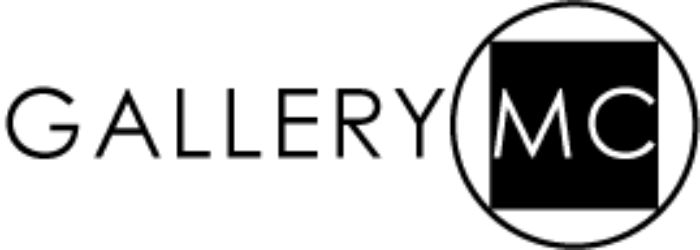Tadej Pogačar & P.A.R.A.S.I.T.E. Museum of Contemporary Art
March 7 from 6:30pm: – Exhibition opening and a discussion between Tadej Pogačar and Suzana Milevska
STATEMENTS is an exhibition of the documentation from the public project by Tadej Pogačar & P.A.R.A.S.I.T.E. Museum of Contemporary Art. It also presents the book P.A.R.A.S.I.T.E. and a new issue of the SEX WORKER newspaper. The show marks 30 years of P.A.R.A.S.I.T.E. Museum of Contemporary Art. The exhibition at Gallery MC is curated by Suzana Milevska, an independent curator and visual culture theorist.
Why STATEMENTS? We need STATEMENTS to understand the intrinsic logic of institutions and how their structures function. Initially, the STATEMENTS by the P.A.R.A.S.I.T.E. Museum of Contemporary Art were placed into the central cultural axis in Madrid to question the power strategies carried out by the local art and cultural centers. The project was implemented in the frame of the project by [M]UMoCA, Projects in Public Space, organized by its directors Tomás Ruiz-Rivas and María María Acha-Kutscher. The work itself consists of printed phrases that were coined by the P.A.R.A.S.I.T.E. Museum of Contemporary Art between 1995 and 2009, accompanied by precise instructions on how the action of carrying the statements should take place. The public actions and photographic documentation were carried out in Madrid on June 24th, 26th, 29th, and July 1st of 2021, near the Centro, Thyssen-Bornemisza Museum, Prado Museum, CaixaForum, Reina Sofía National Museum Art Centre, Velázquez, and Cristal Palaces. This was the first example of Pogačar’s delegated performance where various individuals who were not artists were placed as performers.
Tadej Pogačar founded the Museum of Contemporary Art in 1990. In October 1993, he renamed it to P.A.R.A.S.I.T.E. Museum of Contemporary Art by publishing a public manifesto in which the artist defined the specific features of the newly established “institution”. The Manifesto formulated an interventionist action strategy, which Pogačar dubbed new parasitism by referring to various authors, such as Kazimir Tarman, Stephen Jay Gould, and Michel Serres. The P.A.R.A.S.I.T.E. Museum of Contemporary Art was one of the first virtual museums in contemporary visual art with no physical space or full-time employees. Still, it inhabits “territories, locations, and networks and feeds on the juices of institutions” (Manifesto, P.A.R.A.S.I.T.E. Museum of Contemporary Art, 1992).
The P.A.R.A.S.I.T.E. publication, edited by Tadej Pogačar, marks the thirtieth anniversary of the museum’s operation. It comprises theoretical texts by Suzana Milevska and Igor Zabel about the intersection between the educational, institutional, and artistic aspects of Pogačar’s work and a comprehensive visual documentation of the most important interventions, actions, and other events of the 30-year history of the P.A.R.A.S.I.T.E. Museum of Contemporary Art. New Collectivism authored the book’s design and layout, Nataša Velikonja and Rawley Grau delivered the English translation, and Fotolito Dolenc printed this 160-page publication. P.A.R.A.S.I.T.E. was published by the P.A.R.A.S.I.T.E. Institute, with the support of the Trust for Mutual Understanding, the Ministry of Culture of the Republic of Slovenia, and the Municipality of City Ljubljana.
The exhibition P.a.r.a.s.i.t.i.c. Publications: Posters, Newspapers, Books, Artist Books, Catalogues took place in Cukrarna Gallery in Ljubljana in 2023 and was the first of the series of numerous events that marked the celebration of the thirty years of P.A.R.A.S.I.T.E. Museum of Contemporary Art.
***
Tadej Pogačar (b. 1960) is an internationally renowned artist based in Ljubljana. He completed his studies in ethnology, art history, and painting. The work of Tadej Pogačar emerged from the art practices of counterculture and situationism in the second half of the 1970s and shared his main interests with the new institutionalism since his post-conceptual art practice was fueled by intervention, institutional criticism, and critical artistic research. In his early practice, Pogačar had an ironic attitude towards institutions, ranging from a profound interest to profound objection and rejection. Museums, galleries, libraries, schools, housing, and public locations became his sites of intervention and critique on the one hand, and participatory and collaborative projects on the other hand. The first interventions in museums show the specific nature of the artist’s experimentation with the psycho-geography of institutions, the space, and the concrete exhibition’s settings of the displayed works. For example, the intervention in the Museum of Contemporary History in Ljubljana, entitled Art of History – Through the Body (1994), featured state president Tito’s death mask and museum furniture and artifacts from partisan hospitals. The West Side Story project, presented in the Museum of Modern and Contemporary Art Koroška in Slovenj Gradec, highlighted orientalism and colonialism as central themes. The Fifteen to Two (1995) intervention that took place in the Museum of Modern Art in Ljubljana – the dominant state institution for modern and contemporary art – turned the museum’s entrance hall into a waiting room with exit signs on the walls and a large clock showing the time when employees prepare to go home. Tadej Pogačar is a recipient of numerous awards, scholarships, and residencies, including the Franklin Furnace Award, New York (2001), the Shrinking Cities work grant, Leipzig (2004), the TREND Award for outstanding achievements in visual art (2008), the Jakopič Award, Slovenia’s highest fine arts award (2009), and the György Kepes Grant for Advance Studies and Transdisciplinary Research in Art, Culture and Technology at the prestigious M.I.T. in Boston (2012-2013). His projects have been presented at numerous exhibitions in Europe, Asia, the USA, and South America. Pogačar’s most prominent public art projects are Kings of the Street (1994 – 1995) and CODE: RED (1999/2000 –). Kings of the Street is a pioneering project that highlights his cooperation with the social minority of the homeless people; CODE: RED is a long-term collaborative and participatory project that explores self-organization models within marginal urban minorities and parallel economy models. CODE: RED achieved extraordinary international success; in addition to other locations, it was presented in many international biennials of contemporary visual art, for example, in Venice (2001), Prague (2005), Tirana (2005), São Paulo (2006), and Istanbul (2007).
The programme of the P.A.R.A.S.I.T.E. Institute is supported by the Ministry of Culture of the Republic of Slovenia and by the Municipality of Ljubljana, Department for Culture.
Contact:
Zavod P.A.R.A.S.I.T.E.
P74 Gallery / KAPSULA, TPB 1, 1000 Ljubljana
m +386 40 636 011
Facebook: https://www.facebook.com/P74Gallery
Instagram: https://www.instagram.com/p74gallery/
Twitter: https://twitter.com/p74gallery
youtube: https://www.youtube.com/channel/UCFBtCgSl9JYpa5VD7ueplCQ


